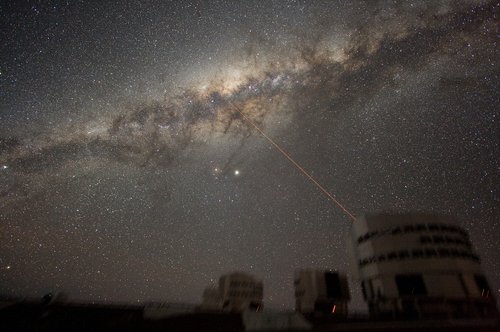Current Info for Observer
as of 04/26/2024 9:33 a.m.
Please login to view current observation details
General Info
| Type | Galaxy |
| Constellation | Sagittarius |
| Right ascension | 17h45'0'' |
| Declination | -29°0'0'' |
| Magnitude | 5 |
| Distance | 20,000ly |
| Size | 10800 arc min |
| Catalog Designations | |
| The milky way is what we call our home galaxy. When we look at the sky and see it, we are looking into the spiral arm in which our solar system is located. Image "ESO-VLT-Laser-phot-33a-07" by ESO - http://www.eso.org/gallery/v/ESOPIA/Paranal/phot-33a-07.tif.html. Licensed under CC BY 3.0 | |
Generate a finder chart
The following form will generate a PDF finder chart suitable for printing using to locate objects in the sky with your telescope!
The Date is only really useful for solar system objects, as deep space objects move measurably only on a galactic timescale.
The larger the F.O.V (field of view), the more "zoomed out" the object will appear. It can be helpful to print several charts of the same object with different field of views.
Limiting the magnitude (remember, lower magnitude means brighter!) of stars and objects can make sure your chart is not cluttered with dim objects that you may not be visible to you anyway. The defaults are good, but try experimenting with raising and lowering the values.
Celestron SkyMaster 15x70 Binoculars
100 points
My first time seeing the milky way. Amazing!
10" Dobsonian
100 points
Naked eye
100 points
Amazing view from an utterly dark sight in the National Forest.
Naked eye
200 points
Naked eye
100 points
Please login to post comments
